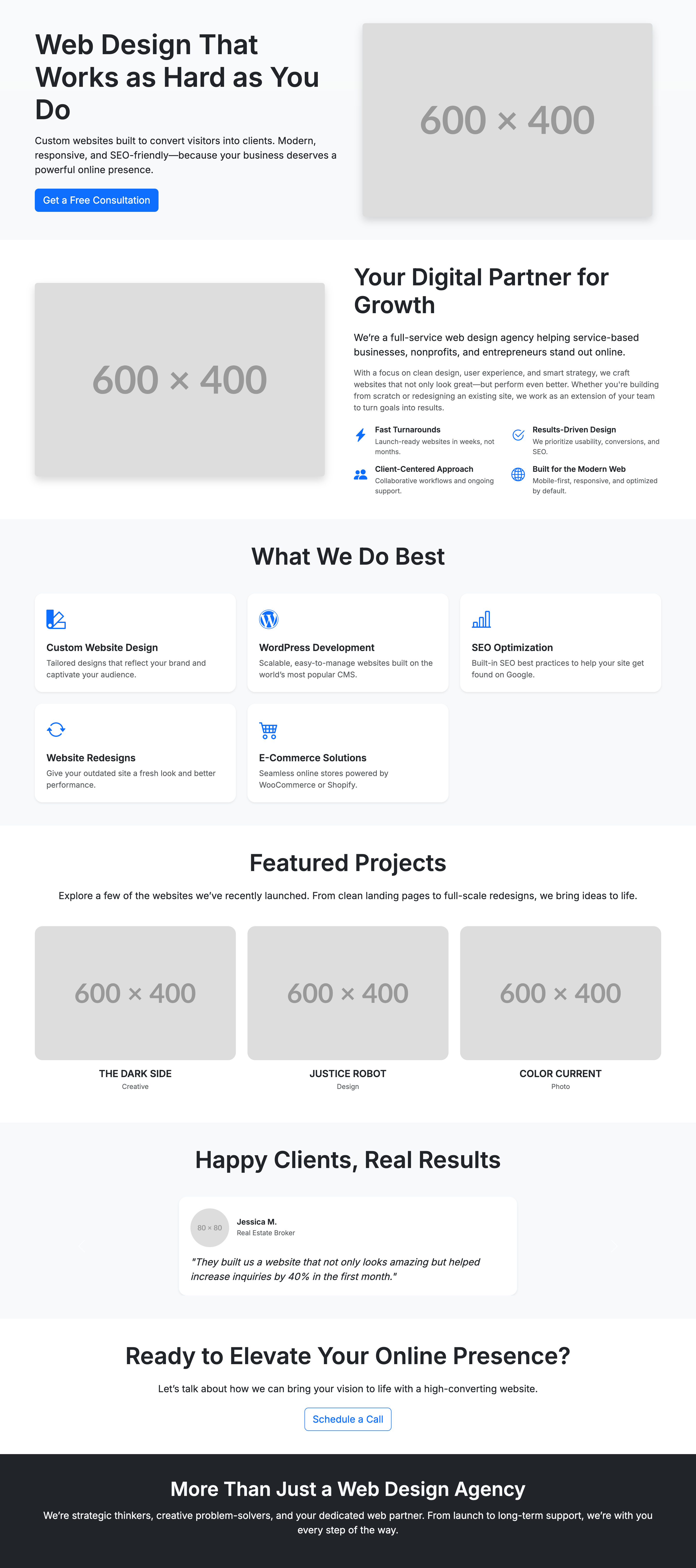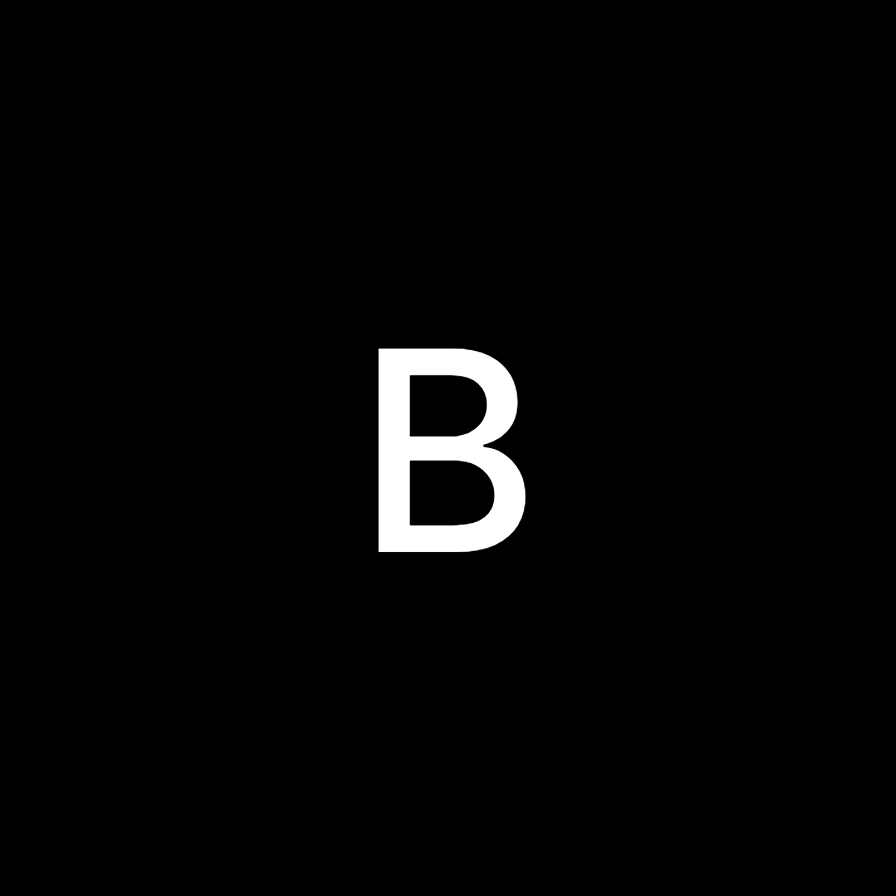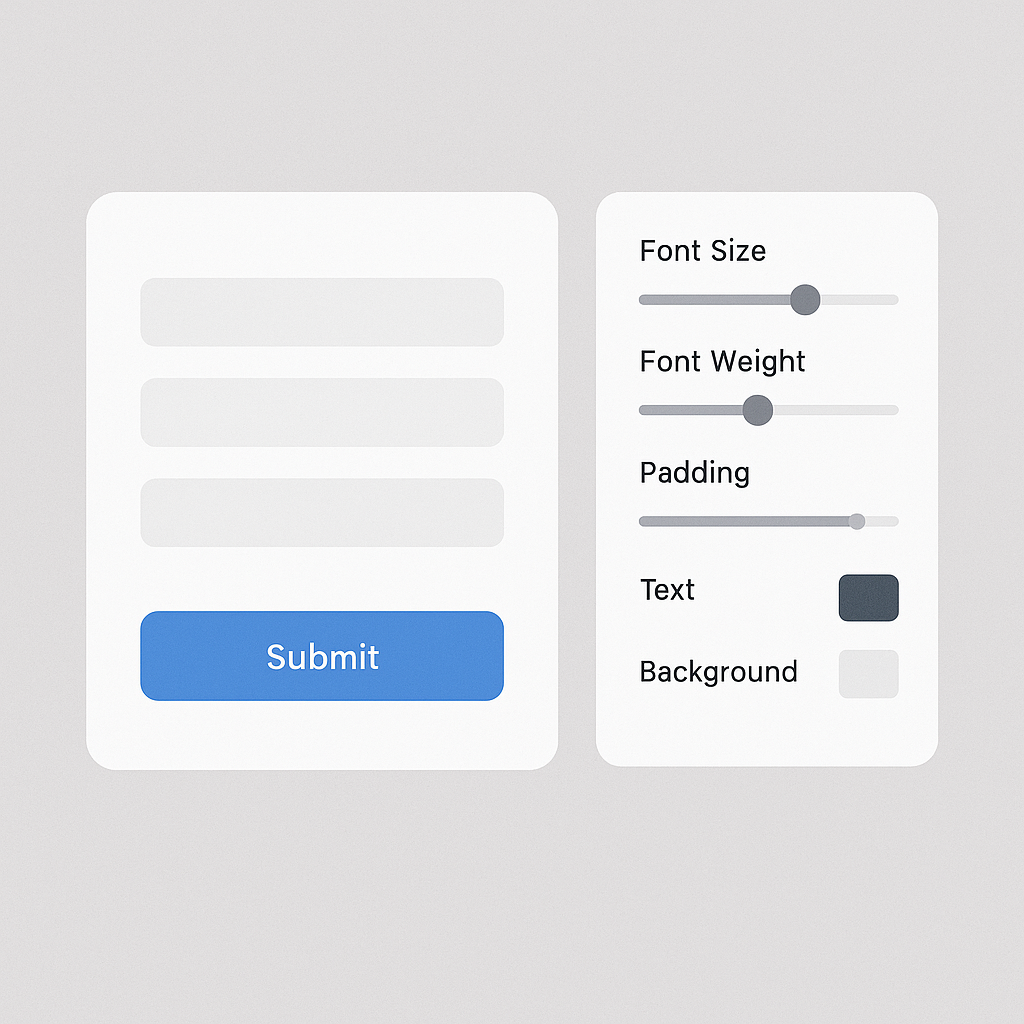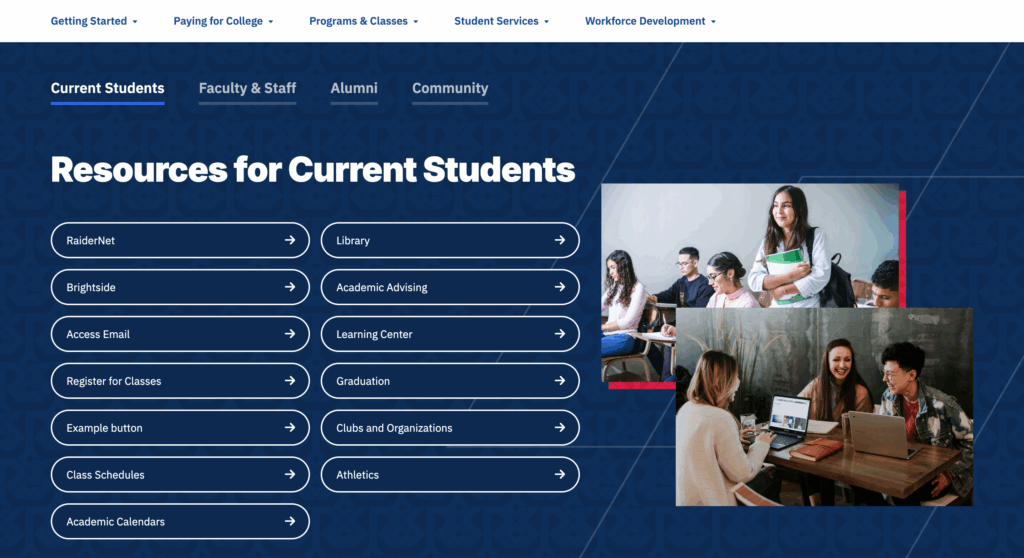Turning content into clean wireframes—instantly.
As a developer deeply invested in workflow automation, I’m always looking for ways to reduce friction during the early stages of web design—especially when clients come to the table with little more than copy in a Google Doc.
That’s why I built the Bootstrap Wireframe Generator GPT.
The Challenge: From Content to Wireframe, Faster
Clients often kick off web projects with nothing more than a rough content draft—just a list of sections, some headlines, and scattered notes in a Google Doc. Turning that into a usable layout can feel like trying to build a house without blueprints.
I wanted to bridge that gap using AI—quickly transforming raw content into something visually structured and functional, using the familiar Bootstrap framework.
The Idea Behind the GPT
I created a custom GPT using OpenAI’s GPT builder that takes raw web content (hero section, services, about text, etc.) and generates clean, semantic Bootstrap wireframe HTML. This isn’t just any HTML output—it uses real layout logic:
- Responsive Bootstrap containers and rows
- Clean sectioning with clear headings and content hierarchy
- Placeholder elements for images and icons
- Utility classes for spacing and alignment
- Accessible and SEO-considerate markup
What Makes This Different From Traditional Wireframes?
Most traditional wireframes—whether built in Figma, Balsamiq, or PDF mockups—are static visuals. They serve as layout blueprints, but they don’t show how content will actually behave on different screen sizes or within a real browser.
This GPT changes that.
- Responsive by Default: Since it uses real Bootstrap 5 code, every wireframe is fully mobile-ready right out of the box.
- Live in the Browser: You can copy/paste the output into any HTML environment and instantly see a working, structured layout—no guesswork.
- AI-Powered Visual Iteration: Want to swap a two-column layout for a hero with a testimonial? Just tweak your prompt. Need to add icon cards or reorder sections? One sentence, and the GPT adapts the layout on the fly.
This turns static ideation into dynamic creation—saving hours of back-and-forth and manual prototyping.

Features I Baked In
- Modern Layout Patterns: Flexbox-based cards, grid systems, testimonial blocks, and CTA sections.
- Design-Kit Aesthetic: The GPT mirrors the structure found in popular wireframe kits—button groups, column layouts, and visual balance.
- Consistent Placeholder Use: Smart image and icon placeholders where appropriate—not overused.
Why It Matters
For freelancers, agencies, and even clients previewing layout ideas, this tool saves time and provides a solid visual starting point before investing in design or development polish.
I also see this GPT as a teaching tool—showing new developers how to think about structure, hierarchy, and layout before focusing on colors, fonts, and animations.
Built With
- Bootstrap 5: For predictable, scalable structure
- OpenAI GPT Builder: Custom prompt engineering to match layout patterns
- Modern Wireframe Principles: Clean, minimal, and developer-ready
Final Thoughts
Building the Bootstrap Wireframe Generator GPT is one of many ways I’ve been blending AI with front-end development to streamline creative workflows. It reflects my passion for not just building websites—but making the process of building websites smarter.
This project turns AI into a visual design partner—fast, flexible, and fully responsive.
Try the tool here: Bootstrap Wireframe Generator
Or view sample outputs on my portfolio.




